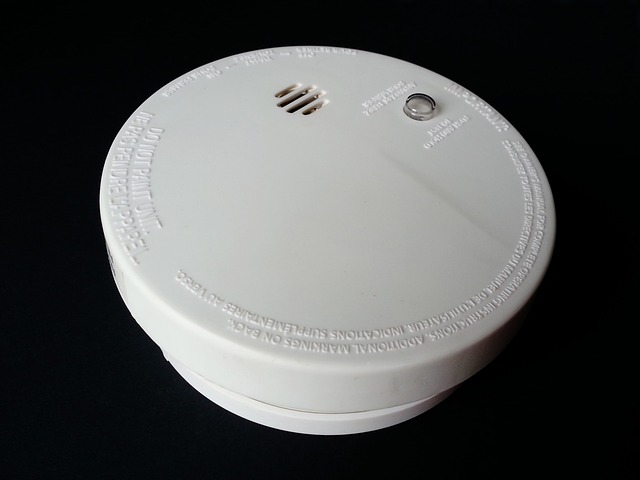Types of alarm in buildings

|
An alarm is a device that makes a loud sound or other indication as a warning or signal.
In the construction industry, alarms are typically used to alert people to potential danger or damage. There are several different types of building alarm, including:
- Accessible toilet alarm: Allows occupants to call for assistance.
- Carbon monoxide detector: Electrochemical sensing technology sounds an alarm if carbon monoxide is detected. Many carbon monoxide alarms are combined with smoke alarms in one device.
- Deterrence alarm: A high-pitched sound that is particularly audible to younger people, can be used as a form of hostile architecture.
- Fire alarm: Gives early warning of developing fires to enable evacuation.
- Flood alarm: Senses the presence of water and can provide early warning of leaks, i.e. in pipework or boilers.
- Intruder alarm: Detects attempted intrusion or unauthorised entry into a building, room, site or secure installation and triggers a response. Some burglar alarms are simple auditory warnings, while others are linked to surveillance cameras, light systems, and remote monitoring by security companies.
- Heat alarm: Have fixed-temperature elements and respond to the temperature of the fire gases in the immediate vicinity of the heat alarm.
- Lift emergency alarm: Sounds an alarm in the event of a passenger lift breakdown to alert personnel.
- Multi-sensor alarm: Detect more than one fire phenomena, for example optical and heat detection.
- Smoke alarm: Can be optical (detect the scattering or absorption of light within the detector chamber) or ionisation (more sensitive to smoke containing small particles such as rapidly burning flaming fires but are less sensitive to steam).
In August 2019, BRE reported that more than £1 billion is lost every year due to false alarms. These losses are due largely to the disruption and loss of productivity in businesses. An earlier research project estimated that each false alarm costs businesses on average around £2.9k. For more information see: Over 1 billion lost every year due to false alarms.
[edit] Related articles on Designing Buildings Wiki
- Automatic fire detection and alarm systems, an introductory guide to components and systems BR 510.
- BS 5839-1: Fire detection and fire alarm system for buildings. Code of practice for design, installation and commissioning and maintenance of systems in non-domestic premises.
- Carbon monoxide alarm.
- Emergency services.
- False alarm.
- Fire detection and alarm system (FDAS).
- Heat alarm.
- Intelligent multi-sensor alarm.
- Interlinked fire alarm safety laws in Scotland.
- Intruder alarm.
- Ionisation smoke alarm.
- Multi sensor alarm.
- New requirements for fire detection and alarm network systems IP 12 13.
- Optical smoke alarm.
- Over 1 billion lost every year due to false alarms.
- Smoke alarm.
- Visual alarm devices - their effectiveness in warning of fire.
Featured articles and news
A change to adoptive architecture
Understanding global weather warming effects on architectural detailing, material choice and human interaction.
How big is the problem and what can we do to mitigate the effects?
Overheating guidance and tools for building designers
A number of cool guides to help with the heat.
The UK's Modern Industrial Strategy: A 10 year plan
Previous consultation criticism, current key elements and general support with some persisting reservations.
Building Safety Regulator reforms
New roles, new staff and a new fast track service pave the way for a single construction regulator.
Architectural Technologist CPDs and Communications
CIAT CPD… and how you can do it!
Cooling centres and cool spaces
Managing extreme heat in cities by directing the public to places for heat stress relief and water sources.
Winter gardens: A brief history and warm variations
Extending the season with glass in different forms and terms.
Restoring Great Yarmouth's Winter Gardens
Transforming one of the least sustainable constructions imaginable.
Construction Skills Mission Board launch sector drive
Newly formed government and industry collaboration set strategy for recruiting an additional 100,000 construction workers a year.
New Architects Code comes into effect in September 2025
ARB Architects Code of Conduct and Practice available with ongoing consultation regarding guidance.
Welsh Skills Body (Medr) launches ambitious plan
The new skills body brings together funding and regulation of tertiary education and research for the devolved nation.
Paul Gandy FCIOB announced as next CIOB President
Former Tilbury Douglas CEO takes helm.
UK Infrastructure: A 10 Year Strategy. In brief with reactions
With the National Infrastructure and Service Transformation Authority (NISTA).
Ebenezer Howard: inventor of the garden city. Book review.
The Grenfell Tower fire, eight years on
A time to pause and reflect as Dubai tower block fire reported just before anniversary.
Airtightness Topic Guide BSRIA TG 27/2025
Explaining the basics of airtightness, what it is, why it's important, when it's required and how it's carried out.
Construction contract awards hit lowest point of 2025
Plummeting for second consecutive month, intensifying concerns for housing and infrastructure goals.
Understanding Mental Health in the Built Environment 2025
Examining the state of mental health in construction, shedding light on levels of stress, anxiety and depression.
























